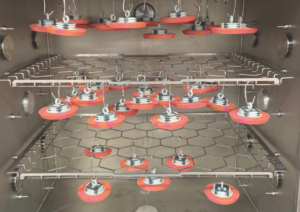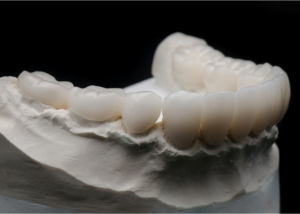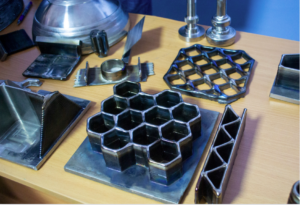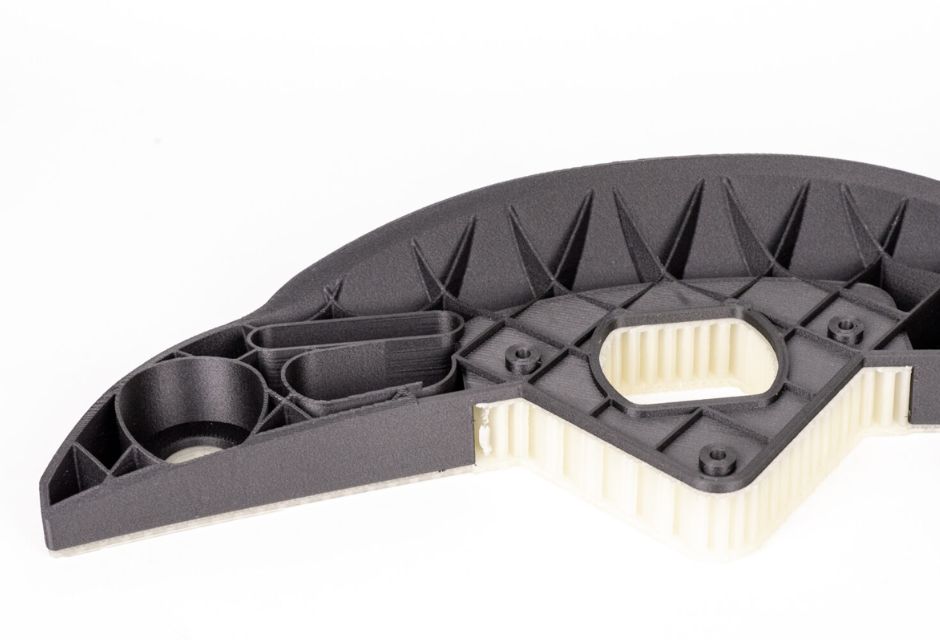
Nylon has excellent properties such as impact resistance and high temperature resistance, making it an ideal material for product development and prototyping.
But, "What is nylon for 3D printing? What features does it have?" Many people may have questions.
This article will therefore explain in detail the characteristics, advantages and disadvantages of nylon and the situations in which it is used.
For more information about Taiga, click here.Table of Contents
Features of Nylon for 3D Printing
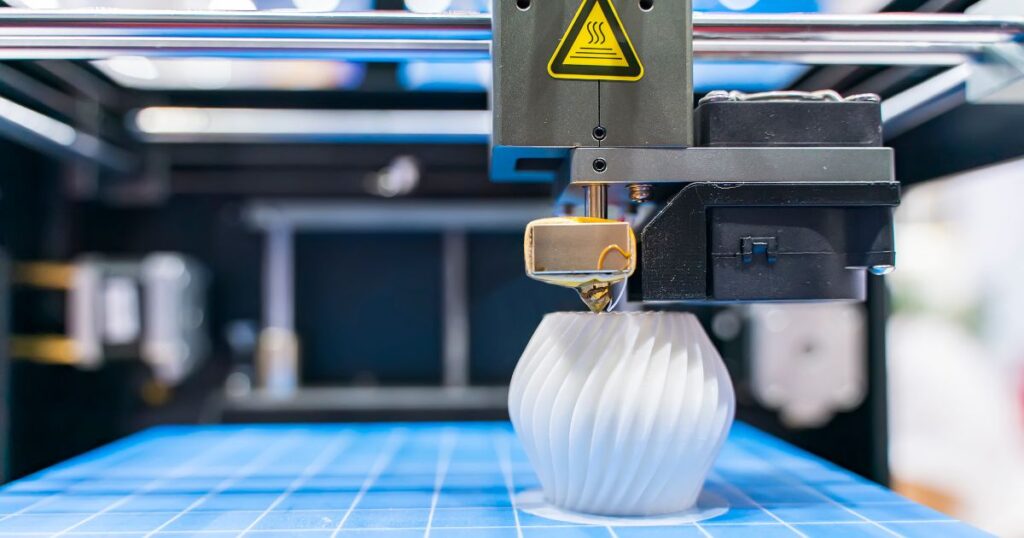
This section describes the characteristics of nylon for 3D printing.
Excellent impact resistance
Nylon for 3D printing has excellent impact resistance among thermoplastics (a type of plastic that softens when heated and solidifies when cooled).
This makes it ideal for manufacturing parts and jigs for industrial products and other items that are exposed to impact when in use.
High toughness
Nylon for 3D printing is also characterized by its high toughness.
This property makes it suitable for use in environments where bending and tensile forces are applied, as well as for the manufacture of industrial and mechanical parts that require flexibility and strength.
Can withstand temperatures as high as 180°C
The moldings made of nylon for 3D printing are also highly heat resistant.
Some types of nylon have the ability to withstand temperatures as high as 180°C and remain stable with minimal deformation due to heat.
High oil and chemical resistance
Nylon for 3D printing also features excellent oil and chemical resistance.
In particular, it is said to be 100 times stronger than cotton against acid, and can maintain its performance even in harsh environments.
Therefore, it is suitable for manufacturing parts in factories and research facilities where oil and chemicals are used.
Advantages of using nylon for 3D printing
Here are three advantages of using nylon for 3D printing.
High versatility, from prototyping to commercialization
The advantage of nylon filaments is that they are highly versatile and suitable for a wide range of applications, from prototypes to final products. For example, in the prototype stage, it is useful not only for verifying shape, but also impact resistance, toughness, and chemical resistance.
It is also suitable for manufacturing jigs and other tools that require strength, and is widely used in manufacturing.
Components can be made lighter while maintaining durability
Nylon filaments are also very lightweight while maintaining rigidity and durability comparable to metal.
Therefore, by replacing existing metal parts with nylon, the overall product weight can be reduced.
The lighter weight will also make the product easier to handle and install, which will lead to improved work efficiency.
Manufacturing efficiency can be improved.
Another advantage of using nylon filaments is that it streamlines the manufacturing process.
Nylon offers the durability and impact resistance needed from the prototype stage to final product manufacturing, making it easy to manage the process from design to manufacturing and to make improvements and other minor adjustments.
Furthermore, 3D printing allows for small-quantity production and can be used to produce a wide variety of products with only minor changes to the design data.
Disadvantages of using nylon for 3D printing
Nylon filament is an excellent material with high strength and heat resistance, but it has the problem of high moisture absorption. Care must be taken because expansion of the filament due to moisture absorption can cause warping and distortion during printing.
When storing and using nylon filaments, take measures to prevent moisture and maintain a dry environment.
Scenes of using nylon for 3D printing
Nylon is used for 3D printing in the following three main situations
Prototype for performance testing
Nylon filaments are suitable materials for prototypes for performance testing.
Prototypes created with nylon can be tested for physical properties such as strength, durability, and impact resistance, in addition to checking molding accuracy.
This will lead to improved quality because the performance required for the final product can be verified at the prototype stage.
Final product manufacturing
Nylon filaments are also suitable for manufacturing end products.
With excellent toughness and abrasion resistance, it provides stable performance even on parts subject to high friction.
In particular, it is often chosen as a material for parts used in harsh environments, such as in the automotive, aerospace, and military industries.
Manufacture of jigs and tools
Nylon filament is also a good material for manufacturing jigs and tools.
Jigs and tools play an important role in fixing and positioning parts in the production process.
Nylon offers high strength, durability, and toughness, making it suitable for the harsh operating environment of jigs and tools.
Types of nylon used for 3D printing
There are four main types of nylon used for 3D printing
- nylon 6
With high toughness and impact resistance, it is suitable for parts requiring high strength. - nylon 66
It is characterized by higher heat resistance and rigidity compared to nylon 6. - Nylon 12
Its low hygroscopicity and high chemical resistance allow it to be used in environments where it is exposed to chemicals. - Nylon Carbon Composite
Carbon fiber blended nylon, lightweight and highly rigid.
The same nylon material has different performance and suitable applications, so use the right nylon for the manufactured product.
Four nylon-compatible 3D printers
Here are four nylon-compatible 3D printers.
Markforged X7/FX10
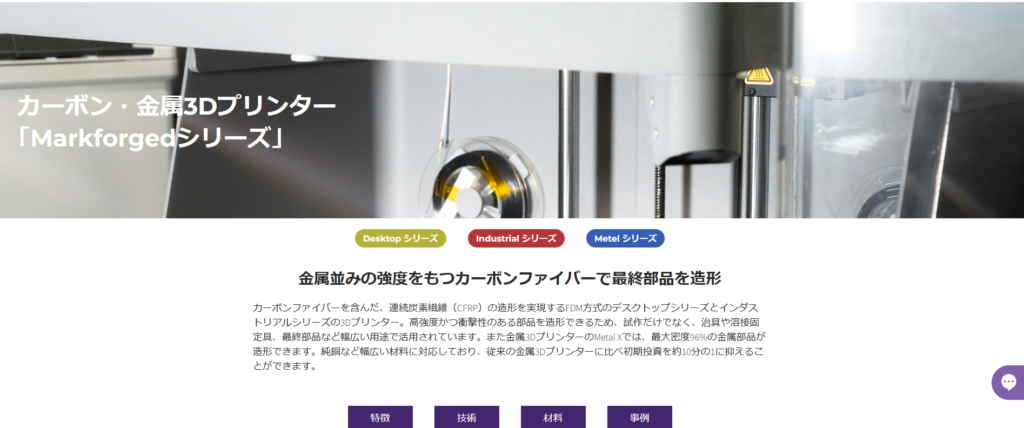
The Markforged series is a desktop and industrial series of 3D printers employing the DM method.
The Industrial Series X7/FX10 offers high-strength, impact-resistant parts made of nylon and a variety of other materials for a wide range of applications, including prototypes as well as jigs, welding fixtures, and finished products.
Markforged X7

Markforged FX10
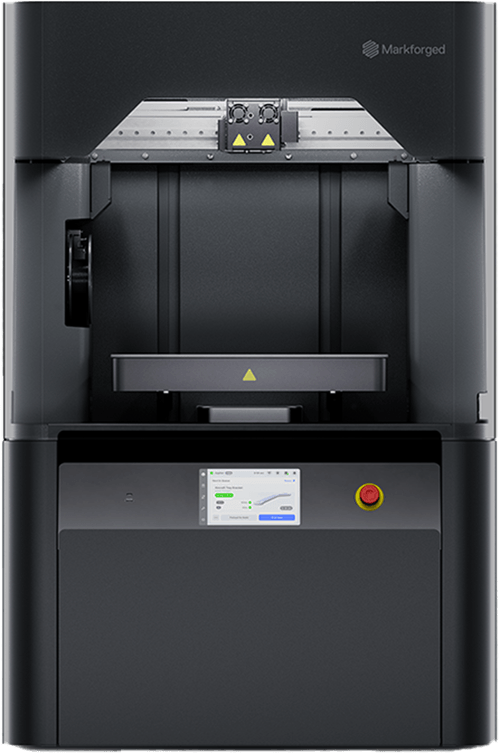
In addition, the Metal X metal 3D printer can produce metal parts with a maximum density of 961 TP3T. Compatible with a wide variety of materials, including pure copper, the initial investment can be reduced to approximately one-tenth that of a conventional metal 3D printer.
| Manufacturer | Markforged |
| Price | Please contact us. |
Sinterit Lisa X
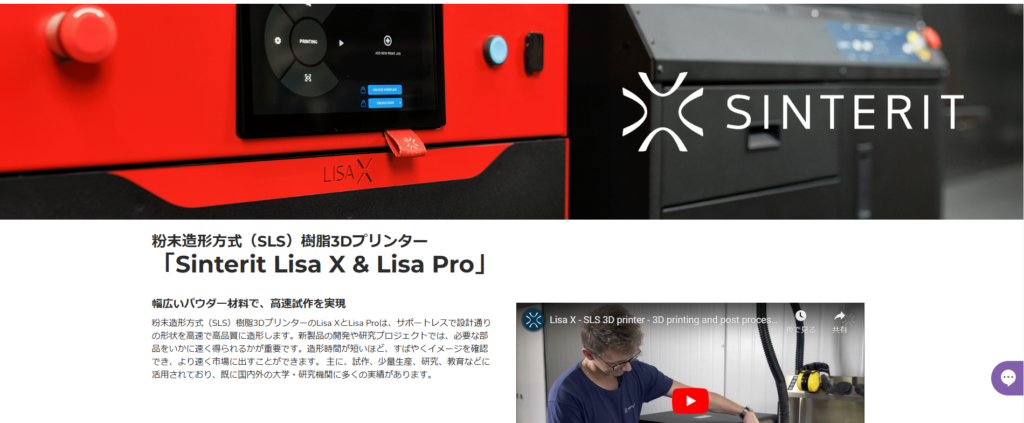
Sinterit Lisa X and Lisa Pro powder-jet (SLS) 3D printers produce designed shapes quickly and accurately without support materials.
In new product development and research projects, it is critical to have the parts you need quickly.
The shorter the molding time, the more quickly the image can be confirmed and the faster the product can be brought to market.
Sinterit Lisa X and Lisa Pro are mainly used in the fields of prototyping, small lot production, research, and education, and have a wealth of experience at universities and research institutes in Japan and abroad.
| Manufacturer | Sinterit. |
| Price | Please contact us. |
CAracol Heron AM
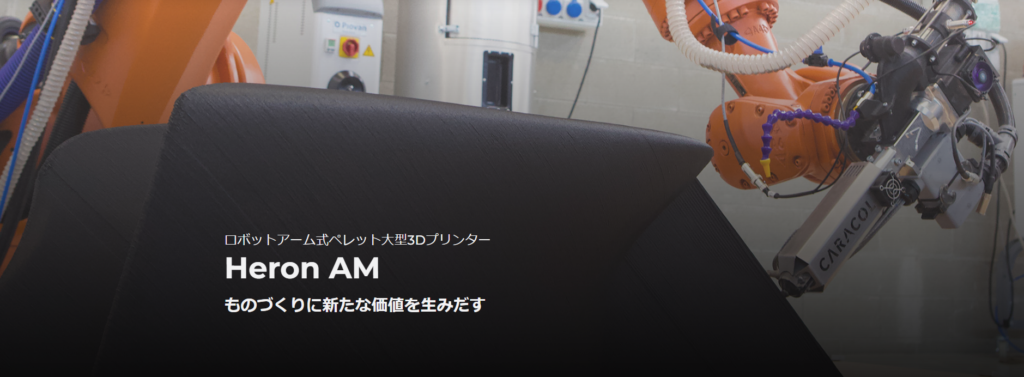
Heron AM is a revolutionary large pellet 3D printer with a robotic arm that can build products up to 4m4m x 3m in size.
Everything you need for molding, including molding heads, pellet dryers, smoothing tools, and software.
In addition to nylon, a wide range of materials are supported, from high-performance polymers to composite materials and recycled materials. Direct molding from pellets enables significant reduction of material costs.
Another feature is that the rough surface characteristic of pellet wood can be smoothed out with the included tool.
Heron AM contributes to environmentally sustainable manufacturing.
| Manufacturer | CAracol |
| Price | Please contact us. |
Creator4S
The Creator4S is a temperature-controlled 3D printer, which enables high-quality modeling with minimal nylon warpage.
It has a number of easy-to-use features for first-time users, including an automatic leveling function.
Nozzle positioning is also automated to ensure stable modeling.
This high-performance model can be used for manufacturing final products.
| Manufacturer | FLASHFORGE |
| Price | From 1.5 million yen |
Guider3
Guider3 is a nylon-compatible 3D printer employing the latest technology.
Highly accurate, complex shapes and large moldings can be finished beautifully.
It is used in a variety of industries, including education, research, industry, and the medical field.
| Manufacturer | FLASHFORGE |
| Price | 450,000 yen (495,000 yen including tax) |
RaisePro3
RaisePro3 is a 3D printer that offers stable modeling.
In addition, its lightweight components and easy maintenance make it easy to use even for beginners.
Another advantage of this system is its versatility, as it allows detailed setting changes.
| Manufacturer | Raise3D |
| Price | inquiry |
Fuse 1+
The Fuse 1+ is a 3D printer with a scanning speed of up to 12.5 m/sec for fast printing speeds.
Powders are used for modeling, and materials can be recycled, keeping material loss as low as possible.
This printer is highly versatile because it can handle a variety of materials in addition to nylon.
| Manufacturer | Formlabs |
| Price | inquiry |
Cautions for using nylon for 3D printing
Nylon filaments have a tendency to absorb moisture.
Therefore, it is important to store them in a special dehumidification box and keep the humidity below 15%.
Appropriate moisture control measures will ensure high quality modeling.
Summary
Nylon for 3D printing has excellent properties such as impact resistance, toughness, and heat resistance, and is used in a wide range of applications.
On the other hand, it is sensitive to moisture and requires proper storage and drying.
In addition, 3D printing with nylon may require know-how and technology.
Therefore, when you want to manufacture products using nylon, it is important to choose a processor that has a proven track record and can handle a variety of processing methods.
If you are considering manufacturing parts using 3D printing, please contact us! Taiga is a free service that allows you to consult with experienced contractors.
We can efficiently proceed with the development of difficult or new parts, small-lot production, prototyping, and mass production while keeping costs low.
For more information about Taiga, click here.
 0120-987-742
0120-987-742